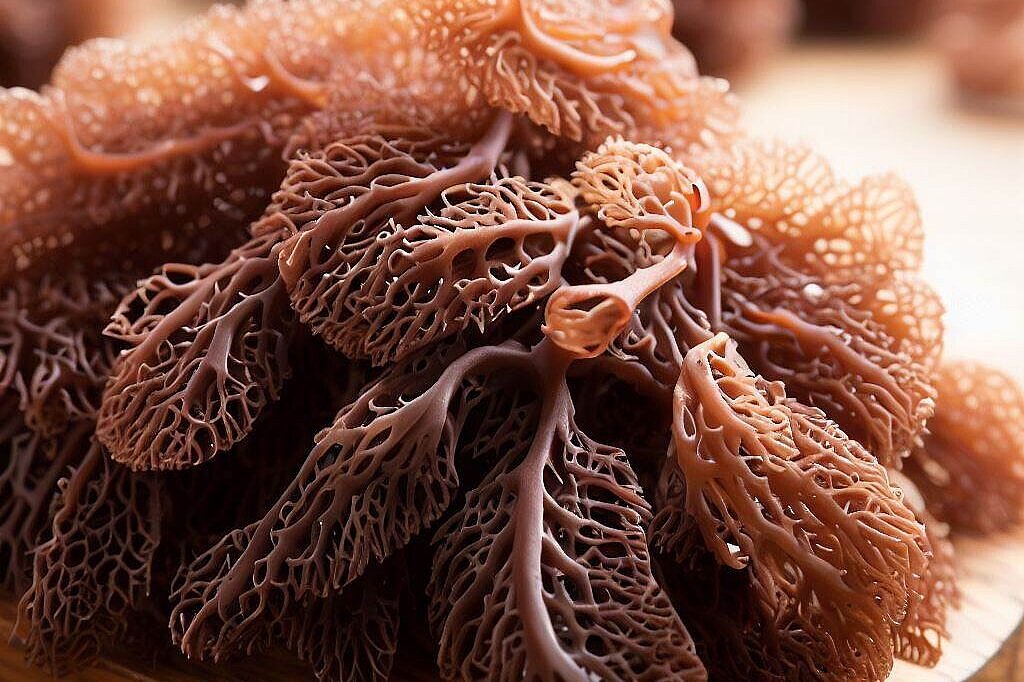Hydroxyethyl cellulose

Hydroxyethyl cellulose (HEC) is a chemical compound widely used in industry and cosmetics, particularly as a thickener, stabilizer and humectant in various products. While hydroxyethyl cellulose is valued in human cosmetics and pharmaceuticals for its non-toxic and hypoallergenic properties, its use and impact in products for dogs is less well known. In this article, we explore what exactly hydroxyethyl cellulose is, what benefits it offers and what potential drawbacks it could have in relation to dogs.
What is hydroxyethyl cellulose?
Hydroxyethyl cellulose is a water-soluble polymer obtained by the chemical modification of cellulose. Cellulose, a naturally occurring polysaccharide and the main component of plant cell walls, is treated with ethylene oxide to produce HEC. The resulting product is a white, odorless powder that is soluble in water and is used in many formulations as a thickening agent or gelling agent.
Use of hydroxyethyl cellulose
Hydroxyethyl cellulose is widely used in the cosmetic industry, household products, pharmaceuticals and increasingly in animal care related products. In pet care, HEC is often used in shampoos, conditioners and other dog grooming products to improve texture, increase viscosity and allow for ease of application.
Benefits of hydroxyethyl cellulose in dog grooming products
Gentle coat care
Products containing hydroxyethyl cellulose can help to gently cleanse and condition dogs' coats and skin. HEC forms a gentle gel when mixed with water, helping to remove dirt and debris without harsh chemicals.
Improving product texture
HEC improves the consistency and viscosity of grooming products, making them easier to apply and allowing them to spread evenly over the dog's coat. This can be particularly beneficial for long-haired breeds.
Hypoallergenic properties
Hydroxyethyl cellulose is considered hypoallergenic and is therefore suitable for use on dogs with sensitive skin. It minimizes the risk of skin irritation and allergic reactions.
Possible disadvantages and precautions
Limited research
Specific research on the use of hydroxyethyl cellulose in dog products is limited. While it is considered safe for humans, its use in dogs should be considered with caution until more information is available.
Individual sensitivities
Although hydroxyethyl cellulose is considered hypoallergenic, individual dogs may react differently to ingredients in grooming products. It is important to test any new product carefully and watch for signs of intolerance.
Quality and purity
The safety of hydroxyethyl cellulose also depends on its quality and purity. Low quality products or those containing impurities can be potentially harmful. It is advisable to choose products from reputable manufacturers and to check the ingredient list carefully.
A beneficial ingredient to use wisely
Hydroxyethyl cellulose offers several benefits in dog grooming, particularly by improving the texture of grooming products and its gentle, hypoallergenic properties. However, it is important to consider the limited research on the use of HEC in dog products and to pay attention to quality and purity when selecting grooming products. As with any new product or ingredient, it is advisable to consult a veterinarian before using it on your dog to ensure that it is suitable for your dog's specific needs and health conditions. With proper selection and application, hydroxyethyl cellulose can be a safe and effective component in your dog's grooming routine.
If you notice any signs of hypersensitivity or poisoning in your dog, you should see your vet immediately. We are not a substitute for a vet, but we try to be as accurate as possible. Every dog reacts differently and we recommend you get a second opinion or consult your vet if in doubt.
Stay healthy and take good care of your four-legged friend!😊
Similar to Hydroxyethyl cellulose
Xanthan gum is a thickening agent obtained from the fermentation of sugar by bacteria. It has the property of gelling and stabilizing liquids. This means that it prevents the components of a product...
Carrageenan has several positive properties that make it interesting for the production of dog food. Firstly, it improves the consistency and appearance of wet food by creating a creamy texture and...
Alginic acid is a carbohydrate that occurs in the cell walls of brown algae. It has a gel-forming effect and is therefore approved as a food and feed additive under the number E 400. Alginic acid is...
CMC is a derivative of cellulose, a plant substance consisting of sugar. CMC is formed when cellulose is treated with caustic soda and chloroacetic acid. Some of the hydroxyl groups of the cellulose...



